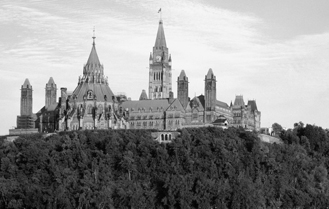Much ado about nothing. Budget 2017 was tabled today by the Liberal government. While Budget 2016 contained many significant tax changes, Budget 2017 does not. Despite having indicated in its 2015 election platform and in Budget 2016 that the Liberal government intended to eliminate a number of perceived tax advantages it considered were benefitting wealthy Canadians and not the middle class, the Liberal government deferred dealing with those perceived tax advantages, but indicated that a paper would be delivered in the coming months outlining issues and providing proposed policy changes relating to tax planning strategies being used by private corporations that provide tax advantages that may be perceived to be unfair.
On the positive side, Budget 2017 contained proposed changes regarding investment fund mergers and amortization of geothermal energy equipment used for heating, but also included a number of unfavourable proposals affecting both individuals and businesses. We suspect Budget 2017 may have in certain respects suffered a "Trump effect" and that there will be more to come this fall.
Highlights of tax proposals
Contrary to expectations and rumours in the media and amongst taxpayers, Budget 2017 did not include any proposed changes to the inclusion rate for capital gains or the tax treatment of stock options. The highlights of the principal business income tax measures contained in Budget 2017 include:
- Investment fund mergers – Budget 2017 proposes to allow a mutual fund corporation that is structured as a switch corporation to be reorganized into multiple mutual fund trusts on a tax-deferred basis on or after March 22, 2017, where certain conditions are met. Budget 2017 also proposes that segregated funds be allowed to merge on a tax-deferred basis for mergers carried out after December 31, 2017.
- Changes to the flow-through share regime – Budget 2017 proposes to classify expenditures relating to drilling or completing a discovery well as Canadian development expense (CDE) as opposed to Canadian exploration expense (CEE) for expenditures incurred after December 31, 2018. It is also proposed that expenses qualifying as CDE that are incurred by certain small principal business corporations will no longer be eligible to be renounced to flow-through share investors as CEE, subject to some transitional relief.
- Recognition of gains and losses on derivatives – Budget 2017 included a proposal that taxpayers be permitted to elect to have gains or losses included in income on a mark-to-market basis for certain eligible derivatives held on income account. Once made, the election will be valid for all subsequent years and is available for taxation years beginning after March 21, 2017.
- Work-in-progress deduction for professionals – Budget 2017 proposed that the ability for certain designated professionals to elect to exclude the value of their work in progress in computing their income for tax purposes be eliminated for taxation years beginning after March 21, 2017.
The balance of this update contains more details of these and other business income tax measures contained in Budget 2017 as well as certain proposed international tax, personal tax and sales tax measures contained in Budget 2017.
A. Business tax proposals
Investment Fund Mergers
Merger of switch corporations into mutual fund trusts
Currently, the Income Tax Act (Canada) (the Act) contains rules that allow for certain mergers of mutual funds on a tax-deferred basis. For example, a merger of two mutual fund trusts or a merger of a mutual fund corporation and a mutual fund trust fall within these rules. However, these rules do not currently allow for the tax-deferred reorganization of a mutual fund corporation into multiple mutual fund trusts. Such a reorganization may be relevant for switch corporations, which are mutual fund corporations with multiple classes of shares, where each class of shares represents a different investment fund.
Budget 2017 proposes to expand the mutual fund merger rules to allow a mutual fund corporation that is a switch corporation to reorganize into multiple mutual fund trusts on a tax-deferred basis. For this measure to apply, in respect of each class of shares of the mutual fund corporation that is or is part of an investment fund, all or substantially all of the assets allocable to that class need to be transferred to a mutual fund trust and the shareholders of that class must become unitholders of that mutual fund trust. This measure will apply to qualifying reorganizations that occur on or after March 22, 2017.
Segregated fund mergers
Segregated funds are life insurance policies that share many similar characteristics to mutual fund trusts; however, unlike mutual fund trusts, segregated funds cannot merge on a tax-deferred basis. Budget 2017 proposes to allow for the merger of segregated funds on a tax-deferred basis to provide consistency between the treatment of segregated funds and mutual fund trusts. It is also proposed that a segregated fund be able to carry over non-capital losses that arise in taxation years that begin after 2017 and apply the non-capital losses in computing its taxable income for taxation years that begin after 2017. The use of these losses will be restricted following mergers of segregated funds. These measures will apply to mergers of segregated funds after 2017 and to losses arising in taxation years that begin after 2017.
Canadian Exploration Expense: Oil and Gas Discovery Wells
Expenditures relating to the drilling of what is known as a "discovery well" (resulting in the discovery of a petroleum or natural gas reservoir) currently qualify as CEE and thus are fully deductible in the year incurred, regardless of whether or not such discovery wells actually lead to production. Budget 2017 proposes that such expenditures generally instead be classified as CDE, which is amortizable for tax purposes at a 30% rate on a declining balance basis to better account for the enduring benefit of the well. However, such expenses may continue to qualify as CEE (or be reclassified as such) where the well has been abandoned, has not produced in 24 months or the Minister of Natural Resources has certified that the relevant costs are expected to exceed $5 million and it will not produce within that time frame. CEE treatment will continue to be available for certain expenses such as early-stage geophysical and geochemical surveying.
This change will apply to expenses incurred after 2018 (including those incurred in 2019 that may be deemed to have been incurred in 2018), except where incurred before 2021 pursuant to a written commitment to incur the expenses entered into prior to March 22, 2017.
Reclassification of Expenses Renounced to Flow-Through Share Investors
Currently, if renounced to shareholders under a flow-through share agreement, up to $1 million of CDE incurred by principal business corporations with taxable capital of not more than $15 million can be renounced to flow-through share subscribers as CEE.
Budget 2017 proposes to eliminate this favourable treatment for expenses incurred after 2018 (including those incurred in 2019 that may be deemed to have been incurred in 2018), except where incurred after 2018 and before April 2019 and renounced pursuant to a flow-through share agreement entered into after 2016 and before March 22, 2017.
Clean Energy Generation Equipment: Geothermal Energy
Currently, equipment that uses geothermal energy is eligible for inclusion in Class 43.2 if it is used primarily for generating electricity (which provides for accelerated capital cost allowance). On the other hand, equipment that uses geothermal energy and is primarily used for heating purposes is generally included in Class 1 (4%).
Budget 2017 proposes three changes in this area. Firstly, Class 43.1 and 43.2 (these classes provide for accelerated cost allowance) will be expanded to include geothermal equipment that is used primarily for the purposes of generating heat or a combination of heat and electricity. Secondly, geothermal heating will be an eligible thermal energy source for use in a district energy system (this type of equipment may be included in Class 43.1 or 43.2). Finally, expenses incurred for the purpose of determining the extent and quality of a geothermal resource and the cost of all geothermal drilling, for heating and electricity projects, will qualify as a Canadian renewable conservation expense.
This measure will apply to property acquired for use on or after March 22, 2017, that has not been used or acquired for use before that day.
Meaning of Factual Control
Under the Act, generally in the context of entitlement to and the sharing of certain tax advantages, the concept of control, which is otherwise limited to what is known as de jure or legal control, is expanded to include the concept of de facto control. Much ink has been spilled by the courts and practitioners in attempting to clarify the concept of de facto control and to delineate those factors that will be relevant in assessing its existence. Since the 2002 decision of the Federal Court of Appeal in Silicon Graphics that posited a more restrictive test, a number of decisions may be interpreted as applying a broader test that arguably may have permitted a finding of de facto control based solely on operational control. In its 2016 decision in McGillivray, the Federal Court of Appeal rejected that broader test and reaffirmed the more restrictive test applied in Silicon Graphics, finding that there must be a "legally enforceable right and ability to effect a change to the board of directors or its powers, or to exercise influence over the shareholder or shareholders who have that right and ability."
Budget 2017 proposes to amend the Act to explicitly provide that there need not be such a legally enforceable right and ability and to permit the examination of all factors in the determination of de facto control. While Budget 2017 suggests that this amendment is a clarification of the test and that the McGillivray decision is inconsistent with underlying tax policy, the amendment will only apply in respect of taxation years that begin on or after March 22, 2017. This suggests the McGillivray decision remains correct for taxation years that began prior to March 22, 2017.
Timing of Recognition of Gains and Losses on Derivatives
Elective use of mark-to-market
There has been uncertainty as to whether taxpayers can use the mark-to-market method on derivatives held on income account. Currently, the only specific rules that govern the timing recognition of gains and losses from derivatives held on income account apply to financial institutions.
Budget 2017 proposes to introduce rules that would allow a taxpayer to elect to use the mark-to-market method for derivatives held on income account. This election would allow taxpayers to mark-to-market eligible derivatives. Generally, an eligible derivative is a derivative held on income account and that meets certain conditions. For example, the derivative must be valued in accordance with accounting principles at its fair market value in the taxpayer's audited financial statements or otherwise has a readily ascertainable fair market value. The taxpayer would be required to annually include in computing its income, the increase or decrease in value of its eligible derivatives. In addition, recognition of accrued gains or losses on eligible derivatives at the beginning of the first election year will be deferred until the derivative's disposition.
An election will remain effective unless revoked with the consent of the Minister of National Revenue. This election is available for taxation years that begin after March 22, 2017.
Straddle transactions
Straddle transactions are transactions where a taxpayer concurrently enters into two or more positions with the expectation that the positions will generate equal and offsetting gains or losses. Taxpayers can dispose of the position with the loss shortly before its taxation year end. At the beginning of the following year, the taxpayer disposes of its position with the gain. This allows the taxpayer to claim a deduction in respect of the realized loss against other income in the first year, while the recognition of the gain is deferred until the following year.
Currently, these types of transactions are being challenged under the provisions of the Act, including the general anti-avoidance provision. Budget 2017 proposes to introduce specific legislation to clarify that these transactions contravene the scheme of the Act. There will be a stop-loss rule that will defer the recognition of any loss on a disposition of a position to the extent of any unrealized gains on an offsetting position. The gain on an offsetting position would go unrealized where the offsetting position has not been disposed of and the market-to-market rules do not apply.
Under the stop-loss rule, a position will include any interest in actively traded personal property, as well as derivatives and certain debt obligations. An offsetting position will generally be a position that has the effect of eliminating all or substantially all of the taxpayer's risk of loss and opportunity for gain or profit in respect of a position. The stop-loss rule will be subject to certain exceptions. For example, it will not apply to a position if:
• It is held by a financial institution, a mutual fund trust or a mutual fund corporation;
• It is part of certain hedging transactions entered into in the ordinary course of the taxpayer's business;
• The taxpayer continues to hold the offsetting position throughout a specified period beginning on the date of disposition of the position; or
• It is part of a transaction or series of transactions, none of the main purposes of which is to defer or avoid tax.
This measure will apply to losses realized on a position entered into on or after March 22, 2017.
Deduction for Unbilled Work-in-Progress
Under the Act, taxpayers in certain designated professions may choose to exclude unbilled work in progress in computing their income for tax purposes. This arguably permits those taxpayers to defer taxation and also realize additional tax benefits as the related expenses needn't be similarly deferred to the year of billing of the related income.
For taxation years beginning on or after March 22, 2017, Budget 2017 proposes to eliminate the ability of such designated professionals to elect to exclude the value of their work in progress in computing their income for tax purposes. Under a transitional rule, only 50% of such unbilled work in progress will be required to be included in income for tax purposes, at the lower of cost and fair market value, for the first taxation year that begins on or after March 22, 2017, and 100% thereafter.
Tax Planning Using Private Corporations
In its 2015 election platform, the Liberal government promised to "cancel income splitting and other tax breaks and benefits for the wealthy." The election platform estimated that income splitting costs the federal government $2 billion annually and posited that it delivers benefits to only 15% of Canadian households and delivers no benefits to working parents, single parents or Canadians who do not have any children. The Liberal government also indicated that, as federal tax rates on the business income of Canadian-controlled private corporations would be reduced from 11% to 9%, they would ensure that Canadian-controlled private corporation status was not used to reduce personal income tax obligations for high-income earners.
In its 2016 budget, the Liberal government reversed the planned reductions in the small business tax rate that had been slated for 2017, 2018 and 2019 and held the rate steady at 10.5% and committed to undertake a review of tax expenditures in order to, among other things, identify opportunities to reduce tax benefits that unfairly help the wealthiest Canadians. While Budget 2017 indicates that this review has highlighted a number of such "opportunities," the absence of any measures to address them is glaring. Budget 2017 specifically noted sprinkling of income using private corporations (an income-splitting strategy), holding passive investments through private corporations, and converting a private corporation's regular income into capital gains. Budget 2017 promises that a paper will be released in the coming months setting out the nature of these issues and proposed policy responses.
B. International tax proposals
Extending the Base Erosion Rules to Foreign Branches of Life Insurers
Canadian-resident life insurance companies benefit from an exemption from Canadian income tax in respect of the business income of their foreign branches. This is similar in effect to the taxation of foreign affiliates of other Canadian-resident corporations, whose profits from carrying on business outside Canada are generally not taxable in Canada and often are exempt on repatriation to Canada. However, in contrast to the foreign affiliate regime, there is no specific anti-avoidance rule to deny such exemption for income from the insurance of Canadian risks.
Budget 2017 proposes to amend the Act to add a rule, modelled on the equivalent rule in the foreign affiliate regime, which will ensure that income of Canadian-resident life insurers from the insurance of Canadian risks is taxable in Canada even if conducted through a foreign branch. The rule will apply where 10% or more of the gross premium income (net of reinsurance) earned by a foreign branch is in respect of Canadian risks, in which case it will be deemed to be part of a business carried on by the life insurer in Canada and the related policies will be deemed to be life insurance policies in Canada.
It is also proposed that complementary anti-avoidance rules be introduced to ensure greater consistency in the taxation of foreign affiliates and foreign branches of life insurers. First, it is proposed that anti-avoidance rules introduced to the foreign affiliate regime in 2014 and 2015, regarding the use of insurance swaps or the ceding of Canadian risks, will also apply to foreign branches of life insurers. Second, Budget 2017 proposes to deem a life insurer to have insured Canadian risks where it can reasonably be concluded that foreign risks were insured through the foreign branch as part of a transaction or series of transactions one of the purposes of which was to avoid the proposed rule. A similar anti-avoidance rule is proposed in the foreign affiliate context to bolster existing rules. These proposals will apply to taxation years of Canadian taxpayers that begin on or after March 22, 2017.
C. Personal tax proposals
Medical Expense Tax Credit
Budget 2017 proposes to broaden the availability of the medical expense tax credit to situations where individuals incur costs related to the use of reproductive technologies, even if such treatment is not medically indicated because of medical infertility. This will expand the application of the medical expense tax credit so that individuals who require medical intervention to conceive a child are eligible to claim the same amount of expenses that would be available for individuals on account of infertility. This measure will apply for 2017 and subsequent taxation years.
Mineral Exploration Tax Credit
Budget 2017 proposes to further extend the 15% Mineral Exploration Tax Credit to flow-through share agreements entered into on or before March 31, 2018 (from March 31, 2017). This credit is intended to help junior mineral exploration companies raise capital by providing an incentive to individual investors in flow-through shares issued to finance "grassroots" mineral exploration.
Electronic Distribution of T4 Information Slips
Budget 2017 proposes to allow employers to distribute T4 information slips to current active employees electronically, without having to obtain consent from an employee in advance. Employers will be required to have certain privacy safeguards in place (as specified by the Minister of National
Revenue) before electronic T4s can be sent without consent to ensure confidentiality. Employers must still provide paper T4s to employees who do not have confidential access to view or print T4s. Employers will also be required to issue paper T4s to employees who request them. This measure will apply for T4s issued for the 2017 and subsequent taxation years.
Home Relocation Loans Deduction
If an employee receives a loan from their employer with an interest rate below a prescribed rate, the amount of difference between the rates is considered to be a taxable benefit to the employee. The value of any portion of the benefit that is in respect of an eligible home relocation loan may be deductible to the employee (generally limited to the annual benefit that would arise if the amount of the loan were $25,000). These loans are generally provided to employees to relocate to a home closer to a new work location. Budget 2017 proposes to eliminate the deduction in respect of eligible home relocation loans. This measure will apply for benefits arising in 2018 and subsequent years.
Anti-Avoidance Rules for Registered Plans
Budget 2017 proposes to expand the advantage, prohibited investment and non-qualified investment rules that currently apply to, for example, registered retirement savings plans, to registered education savings plans and registered disability savings plans. Subject to certain exceptions, this measure will apply to transactions occurring, and investments acquired, after March 22, 2017.
D. Sales and excise tax proposals
Taxi and Ride-Sharing Services
While taxi businesses are required to register for and collect and remit GST/HST regardless of whether they would otherwise qualify as small suppliers under the Excise Tax Act (Canada), the definition of a taxi business is currently limited to passenger transportation businesses that are subject to regulation under the laws of Canada, a province or a municipality. As a result, certain ride-sharing services may arguably not be subject to that requirement.
Budget 2017 proposes to expand the definition of a taxi business to include persons engaged in a business of passenger transportation where the transportation is arranged for or coordinated through an electronic platform or system, subject to exceptions for elementary or secondary school transportation services and sightseeing services.
Tobacco Taxes
Budget 2017 proposes to eliminate the tobacco manufacturer's surtax (a 10.5% surtax on profits arising from the manufacture of tobacco and tobacco products in Canada) and to increase tobacco excise duty rates. These measures will apply as of March 23, 2017.
Alcohol Taxes
Excise duties imposed on alcoholic products are generally imposed at the time of production or packaging, and are generally payable by manufacturers or excise warehouse licensees. Budget 2017 proposes to increase the excise duty rates on alcohol products by 2% effective the day after March 22, 2017, in respect of duty that is payable after that date. It is also proposed that the rates be adjusted by the Consumer Price Index on April 1 of every year, starting in 2018.











